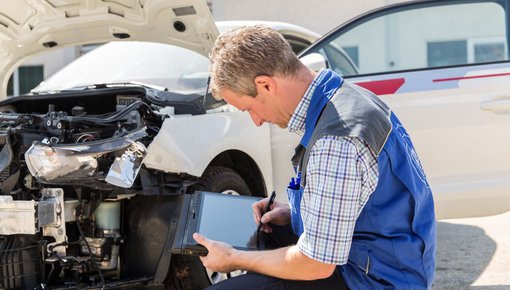Introduction
Vehicles are an integral part of modern society, serving as the primary mode of transportation for people and goods. From ancient times to the present day, the evolution of vehicles has played a crucial role in shaping economies, fuerteventura rent a car, and lifestyles. This article explores the different types of vehicles, their historical development, technological advancements, and their impact on society and the environment.
Types of Vehicles
Vehicles can be classified into several categories based on their design, purpose, and power source. Here are the main types:
- Motor Vehicles:
- Cars: The most common type of personal transport, available in various styles such as sedans, SUVs, and hatchbacks. Cars are powered primarily by internal combustion engines or electric motors.
- Motorcycles: Two-wheeled vehicles that offer greater maneuverability and fuel efficiency. They can be used for commuting, recreation, or sport.
- Trucks: Designed for transporting goods, trucks come in various sizes and configurations, including pickup trucks, delivery vans, and heavy-duty transport vehicles.
- Non-Motor Vehicles:
- Bicycles: Human-powered vehicles that provide an eco-friendly mode of transport. Bicycles are popular for commuting, recreation, and sport.
- Horse-drawn Vehicles: Used historically for transportation and agriculture, these vehicles are still seen in some rural areas and tourist attractions.
- Public Transport Vehicles:
- Buses: Designed to carry multiple passengers, buses are essential for public transit systems in urban areas.
- Trains: Trains can be used for both passenger and freight transport, providing an efficient means of covering long distances.
- Specialized Vehicles:
- Emergency Vehicles: Includes ambulances, fire trucks, and police cars, designed for rapid response in emergencies.
- Construction Vehicles: Heavy machinery such as bulldozers, excavators, and cranes used in construction and infrastructure projects.
- Electric and Hybrid Vehicles:
- Electric Vehicles (EVs): Powered entirely by electricity, EVs are gaining popularity due to their environmental benefits.
- Hybrid Vehicles: Combining an internal combustion engine with an electric motor, hybrids aim to improve fuel efficiency and reduce emissions.
Historical Evolution of Vehicles
The history of vehicles dates back thousands of years, starting with simple carts and chariots:
- Ancient Vehicles: The earliest vehicles, such as the wheel and axle, were developed around 3500 BC in Mesopotamia. Horse-drawn chariots emerged around 2000 BC, revolutionizing transport and warfare.
- Steam-Powered Vehicles: In the late 18th century, the invention of the steam engine led to the development of steam-powered cars and trains, significantly advancing transport capabilities.
- Internal Combustion Engine: The late 19th century saw the rise of gasoline-powered vehicles, which became the dominant form of personal and commercial transport in the 20th century.
- Mass Production: The introduction of assembly line production by Henry Ford in 1913 made cars more affordable and accessible, leading to widespread car ownership.
- Modern Advancements: Recent decades have witnessed significant technological innovations, including safety features, fuel efficiency improvements, and the emergence of electric and autonomous vehicles.
Technological Advancements
The automotive industry has seen numerous technological advancements that have transformed vehicles:
- Safety Features: Modern vehicles are equipped with advanced safety systems, including airbags, anti-lock braking systems (ABS), electronic stability control (ESC), and collision avoidance systems.
- Connectivity: Many vehicles now come with integrated infotainment systems, offering features such as navigation, Bluetooth connectivity, and smartphone integration.
- Fuel Efficiency: Innovations in engine technology and materials have led to vehicles that consume less fuel and produce fewer emissions, addressing environmental concerns.
- Autonomous Vehicles: The development of self-driving technology represents the next frontier in vehicle innovation, with the potential to improve safety and reduce traffic congestion.
Impact on Society
Vehicles have had a profound impact on society:
- Economic Growth: The automotive industry is a major driver of economic activity, providing jobs and supporting related industries such as manufacturing, logistics, and insurance.
- Urban Development: The proliferation of vehicles has influenced urban planning and development, leading to the growth of suburbs and the need for extensive road networks.
- Environmental Concerns: While vehicles have improved mobility, they also contribute to air pollution and greenhouse gas emissions. The shift toward electric and hybrid vehicles aims to mitigate these environmental impacts.
- Social Changes: Vehicles have transformed social interactions and lifestyle choices, enabling people to live farther from their workplaces and changing the dynamics of commuting and travel.
Conclusion
Vehicles have evolved dramatically from their humble beginnings to become complex machines that are vital to modern life. As technology continues to advance, the future of vehicles promises to be shaped by innovations that prioritize sustainability, safety, and connectivity. Understanding the various types of vehicles and their historical context helps appreciate their role in shaping our societies and the ongoing challenges we face in ensuring their positive impact on the environment and our communities.
